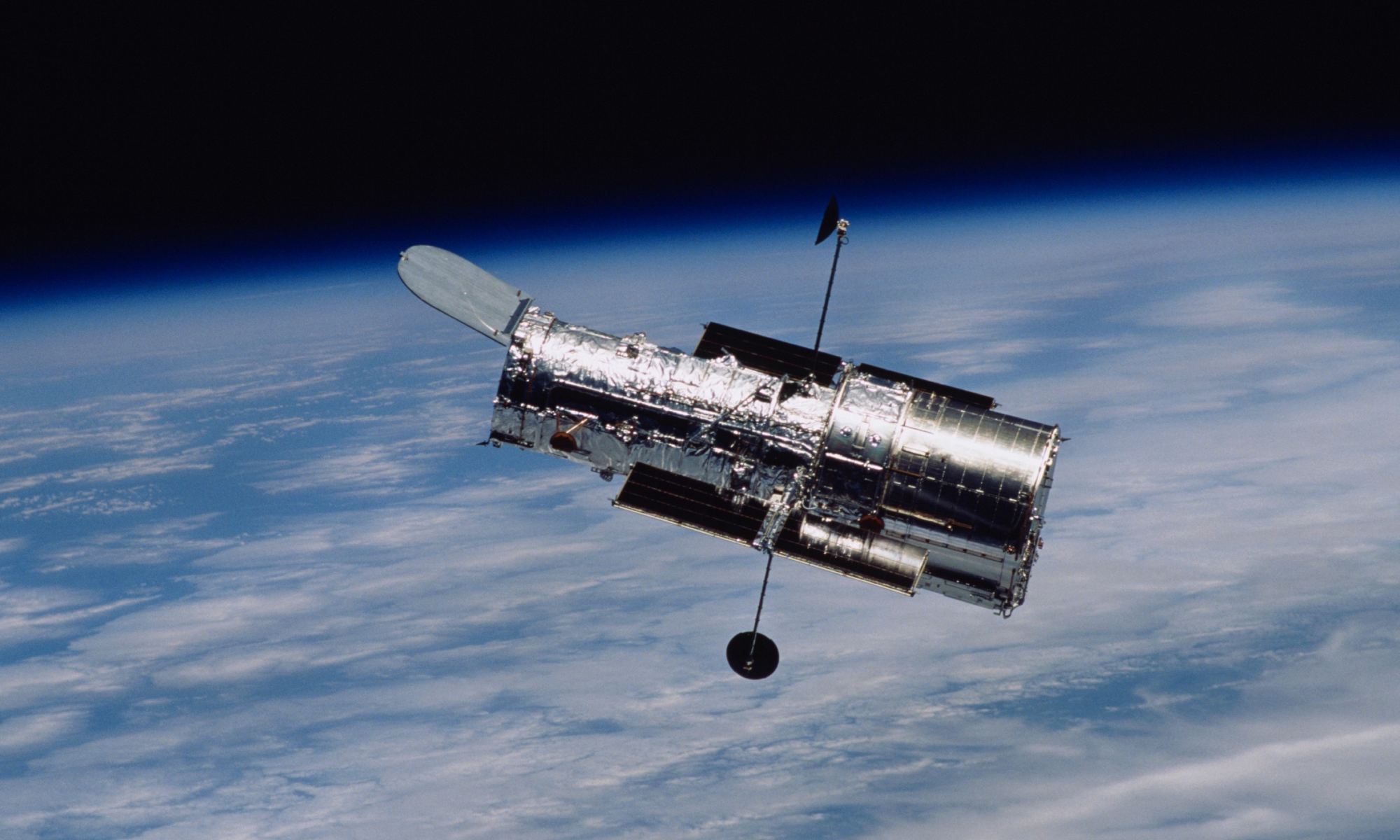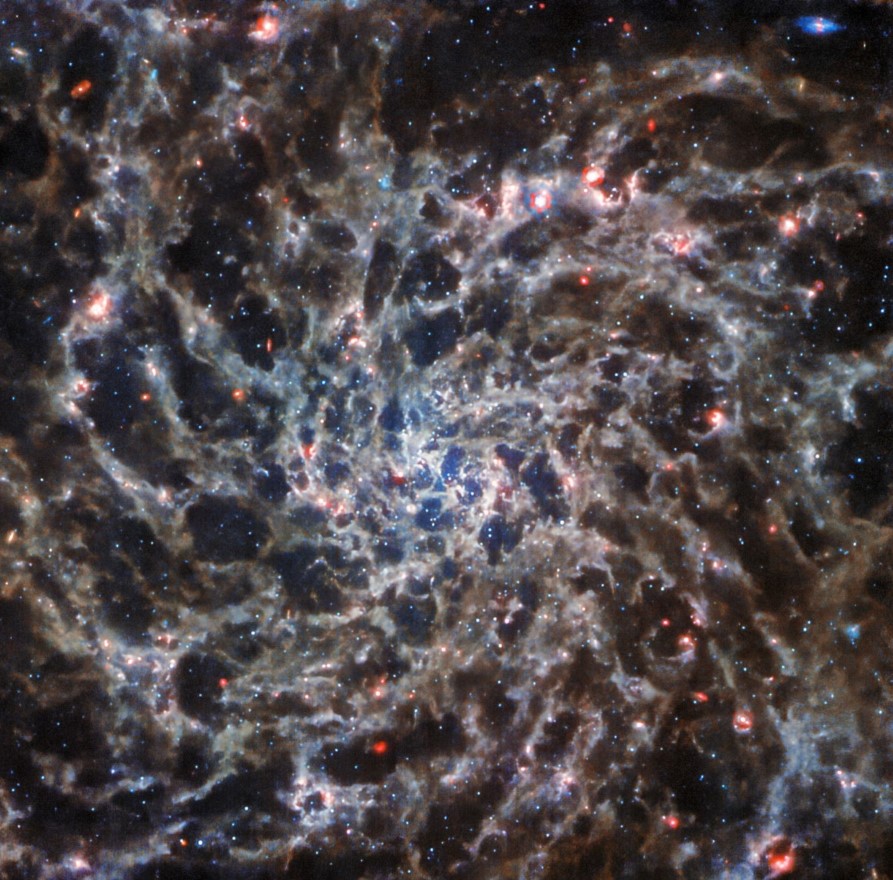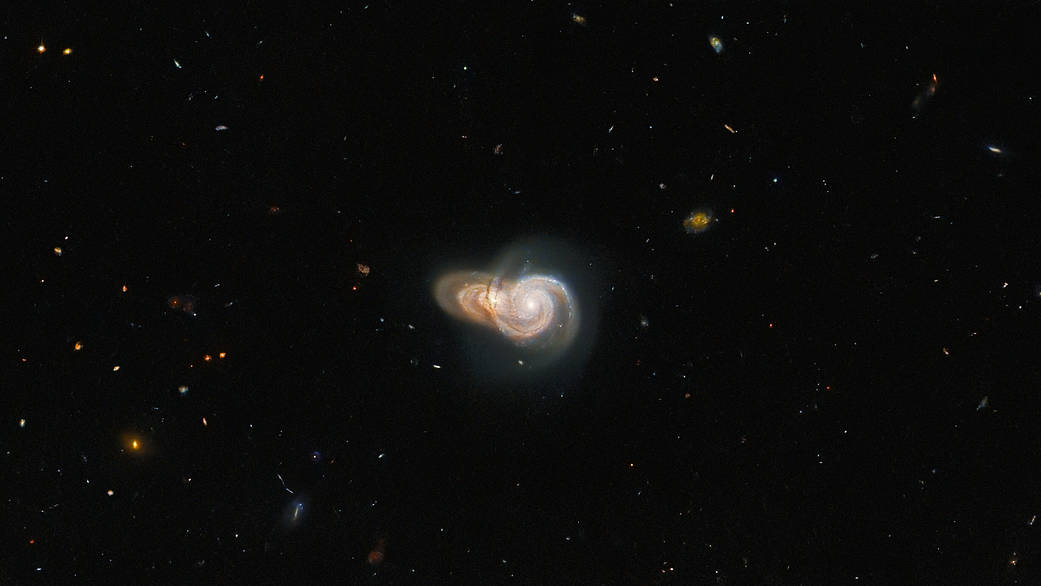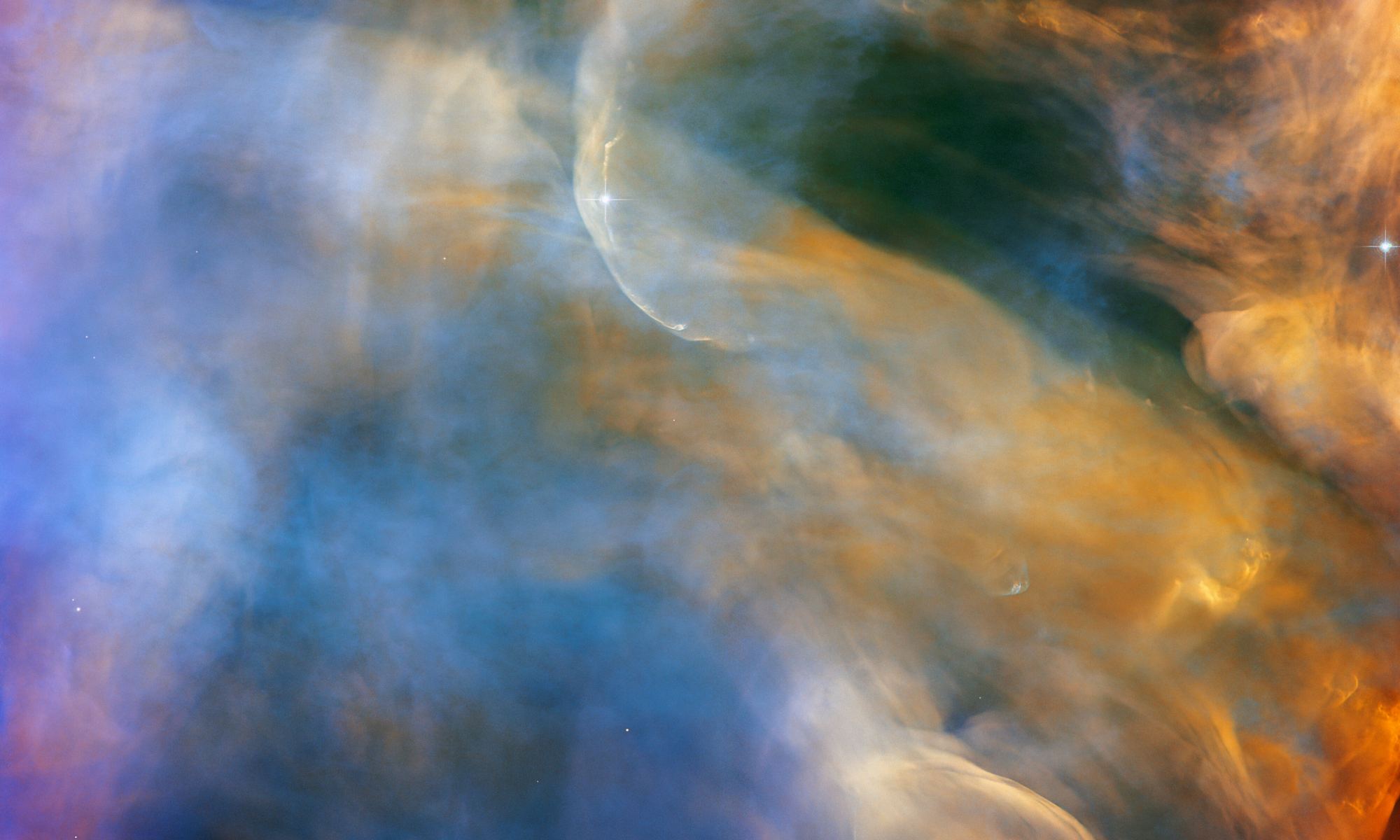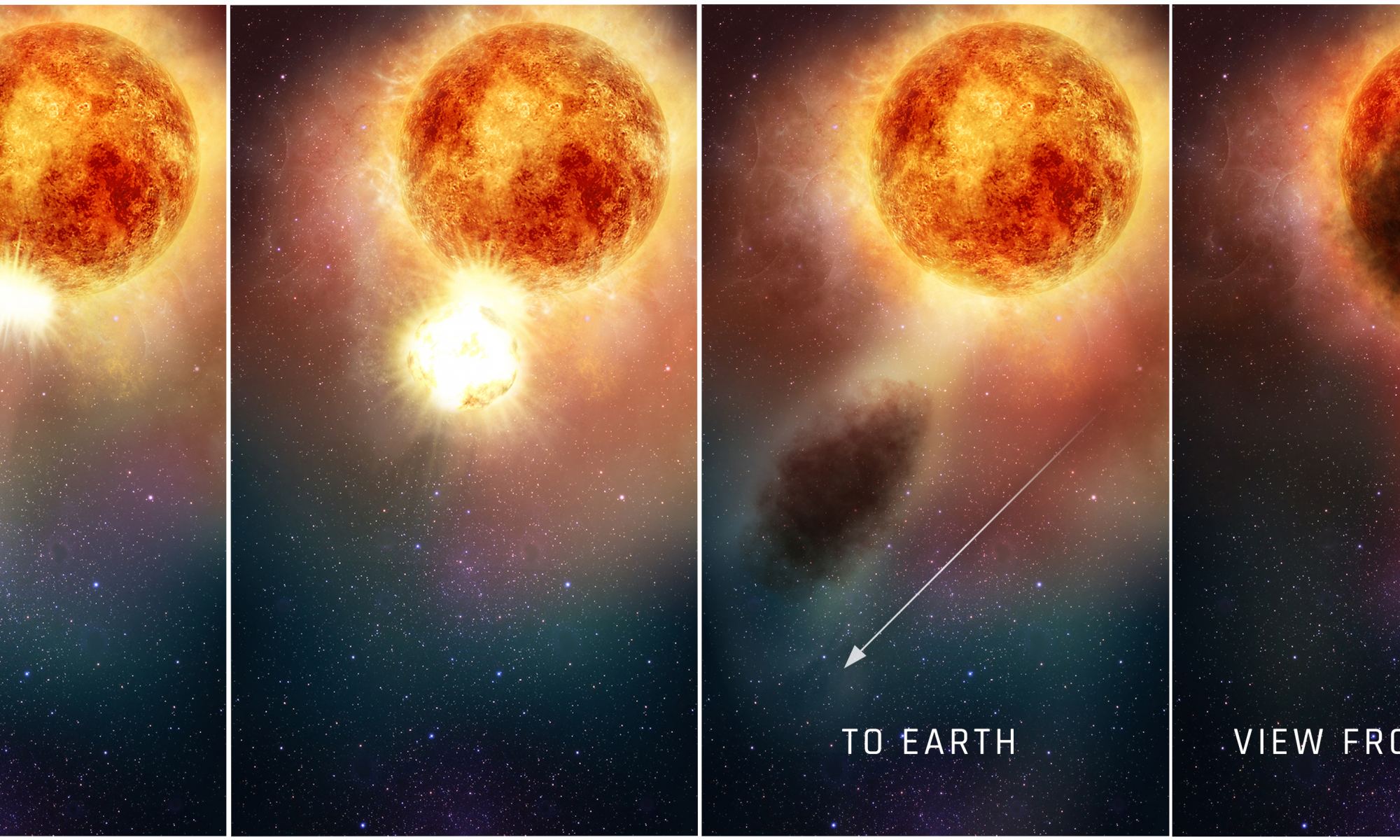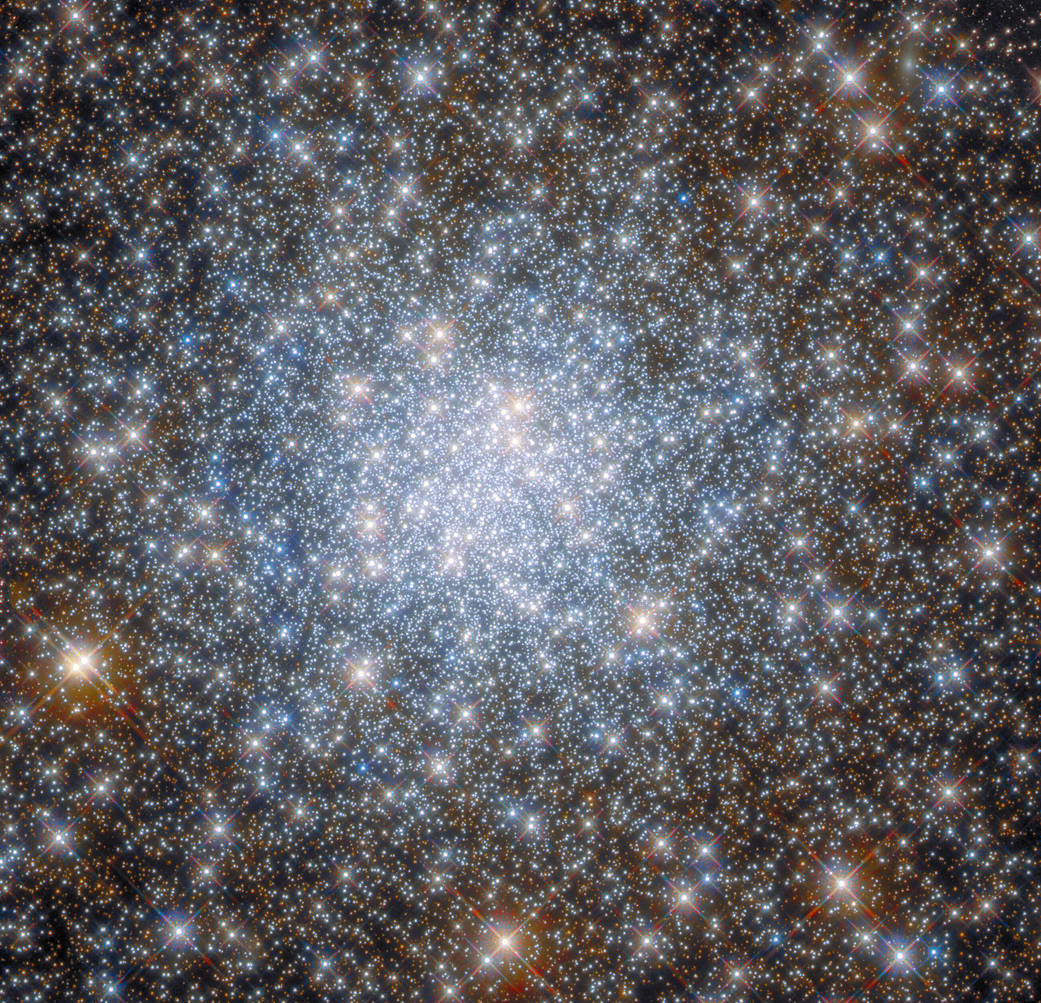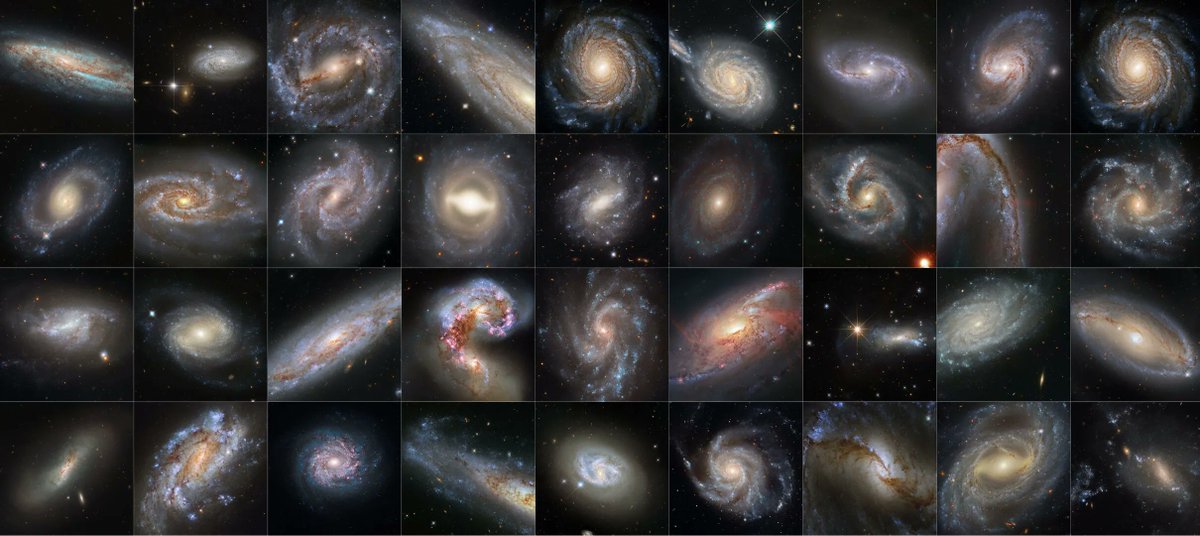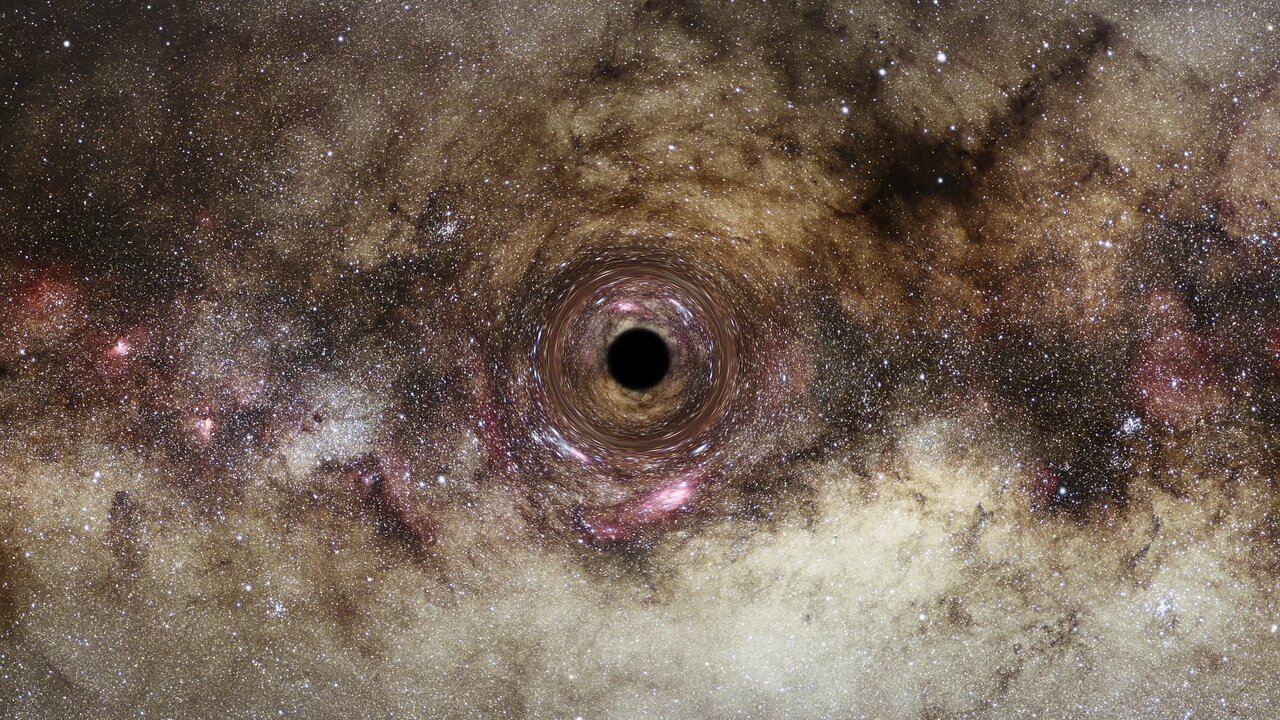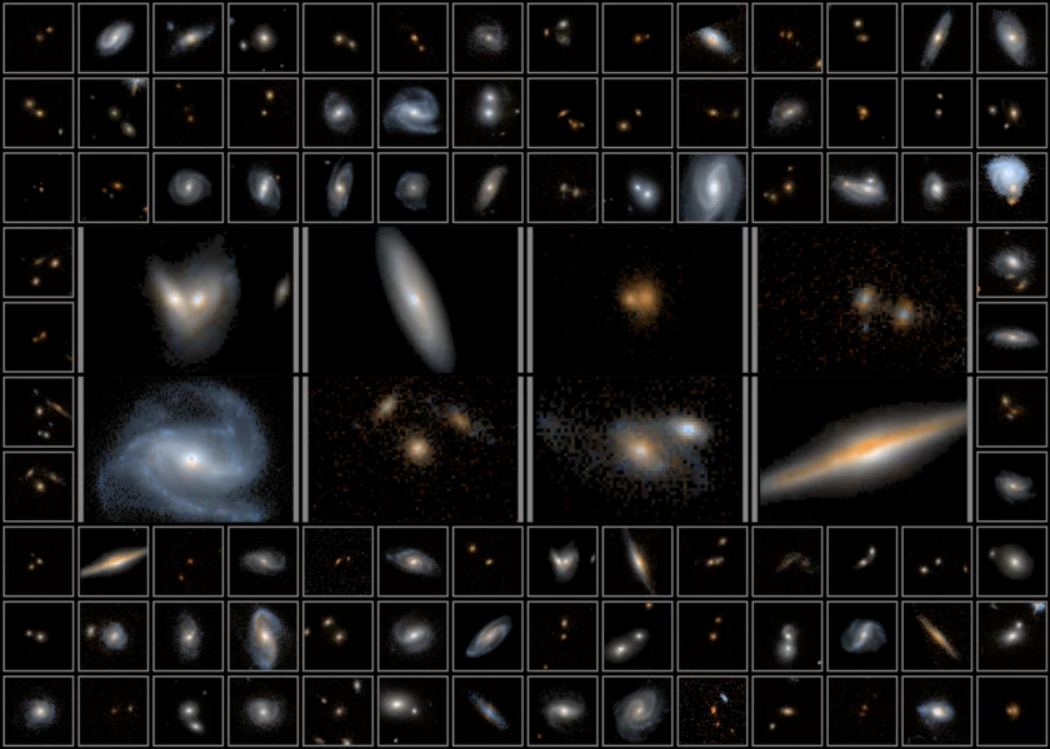Even after thirty years, and with next-generation telescopes (like the James Webb) hogging all the attention, the Hubble Space Telescope still manages to inspire. Recently, Hubble acquired a breathtaking image of NGC 1961, an intermediate spiral galaxy measuring 220,000 light years in diameter and located about 180 million light-years away in the constellation Camelopardalis. Intermediate spiral galaxies are so-named because they are between “barred” and “unbarred” spiral galaxies, which means they don’t have a well-defined bar of stars at their centers.
The data used to create this image came from two sources, the first being a study of previously-unobserved objects belonging to the Atlas of Peculiar Galaxies (or “Arp galaxies,” named after astronomer Halton Arp). The second source consisted of observations made of the progenitors and explosions of a variety of supernovae. Between 1998 and 2021, four supernovae were observed in NGC 1961 (SN 1998eb, SN 2001is, SN 2013cc, and SN 2021vaz), making it a high-value target for study.
The resulting image captures the dusty spiral arms, bright, hot star-forming regions of NGC 1961 and the galaxy’s glowing center that manages to outshine all the stars in its disk. This is an example of an active galactic nucleus (AGN), where the central region emits tremendous amounts of energy because it contains a supermassive black hole (SMBH) that feeds on the surrounding dust, gas, and stars in the core region.
Many AGNs have been observed emitting bright jets of hot dust and gas that are accelerated to relativistic speeds (a fraction of the speed of light). These jets can be seen millions of light-years away and play an important role in a galaxy’s evolution. NGC 1961 is a fairly common type of AGN that shines brightly but emits low-energy-charged particles. It just goes to show that the old workhorses never lose their mojo! They just keep on delivering well into their later years!
Further Reading: NASA

